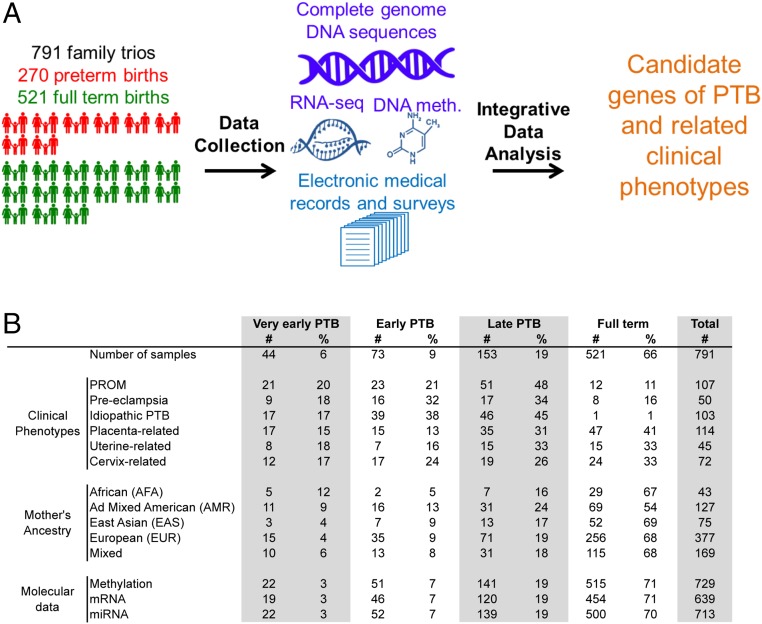Fig. 1.
Study overview. (A) Graphical overview of the study described in this report. We collected peripheral blood samples from 791 family trios, of which 270 represented PTBs. We carried out WGS of DNA for each member of the family trio, i.e., the father, mother, and newborn. We profiled mRNA and miRNA expression by using RNA-seq as well as DNA methylation in the maternal samples. Extensive clinical information was captured by using EMRs and study-specific patient surveys. All these data were integrated in an analytical framework to characterize the genomic and molecular associations with PTB and related clinical phenotypes. (B) Summary of distribution of family trios across clinical phenotypes and ancestries broken down by PTB categories based on gestational age. Molecular data indicate the number of maternal samples profiled for DNA methylation and mRNA and miRNA expression. Numbers cited indicate samples that passed stringent quality-control criteria for inclusion in this report.

